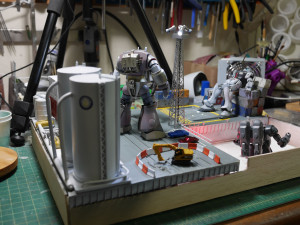A little over a week ago, I picked up the 1/100 Grimgerde as a commission project. The customer sent an email to me back in early March asking if I could build and paint the kit straight out of the box. The kit wasn’t released yet, so the project waited. Late April, the kit got released, but I wasn’t able to get my hands on the kit until May 14 when the local sources got the kit in stock. We had a build gathering, so it was the perfect day to start cutting, sanding, and snapping the kit together. I didn’t finish the job at the build gathering because things generally degenerate to food, drink, and for this past gathering; hanging out around the fire pit roasting marshmallows and making s’mores. Twas a good build gathering.
I got about this far at the build gathering:
Sunday rolled in and the distractions of the previous day’s build gathering festivities behind; I focus on getting the rest of the kit sanded and snapped. And in short time, that was done and I was almost ready to disassemble everything for cleaning.
The customer had requested some extra sanding work to sharpen some of the edges, so the “bunny” ears got a little sanding work to thin them out slightly and sharpen them. One side was sanded and a few pictures are snapped for comparison.
An then the other side is sanded down and making sure the two ears match. It would suck if one was thinner than the other. And passing the visual check, these and the above pictures were sent off to the customer to let them know that work had begun on the project.
The other bit the customer wanted was to thin down and sharpen the swords. I got a response from the customer and they wanted the rear bumps on the ear’s sanded away, so that was done when I worked on the blades. Below are some example pictures. The ears are now flush at the back and come to a point. The blades are nice and thin, and sharpened to a point as well as along the cutting edges. I think I like this much better than the thick, blunt wood practice sword finish.
The start of week saw work on the painting the frame. After disassembly, the main armor parts were washed while the frame was painted. I spent the early parts of or bi-weekly broadcast painting – basically priming the armor pieces, some detail painting, and painting the swords in Alclad Pale Gold.
The project called for Mr Color Wine Red as the main red color and to help distinguish the reds, I primed the kit in Mr Surfacer 1000 to get a good starting point.
Giving the frame parts a day and change to fully cure up, they were wrapped in parafilm to protect the parts and then the armor pieces were assembled onto the frame over the covered frame pieces. Pause. Some folks make ask what the hell am I doing here. Well, there are several reasons I do this. First and foremost, I’d rather not paint each individual frame part one by one. The process is too time consuming and is hell on my trigger finger. Second, having the parts together greatly reduces tonal differences in adjacent parts. If I just so happen to spray slightly heavier on one piece and slightly less on another, there’s a real chance that those two parts would have different red tones. So to really combat this, I paint in sub-assemblies: the legs, upper torso, head, arms, etc.
The rest of the armor pieces are painted and I did some freehand metallic detail work with the airbrush. Then let everything cure for a day.
Returning to the swords, I didn’t like the dull gold finish. And there were some sanding issues. The swords were resurfaced and I started over with the gold. I base coated with gloss black. Then sprayed alclad polished aluminum. Once this was all cured for a good couple of hours, I mixed a custom clear yellow with orange to get a much brighter gold, and sprayed that over the polished aluminum. Unfortunately, I don’t have a good picture of the original gold, but here’s the new version:
By now, we’re on Thursday of the week, 6 days from when I first started. The parts are panel lines with an enamel wash, then cleaned.
A few hours later, a clear flat is sprayed over all the armor pieces. And the parts are left to cure overnight.
Getting home from work on Friday, I get to finally remove the parafilm. The armor pieces are pulled from the frame, then the parafilm is removed, and then armor pieces replaced. And that’s all she wrote. Here’s the process:
The sub-assemblies come together and after a few quick shots, the whole thing is assembled for final pictures.
It is very refreshing to be restricted on a kit. The focus is there, and the process is very straightforward and simple. I have a renewed appreciation for building out of the box. Hell, I can get a 1/100 kit done in just one week. The last 1/100 IBO project took a full month from snap to finish and this is a very nice contrast. It feels damn good to get something done. Here is the completed gallery:
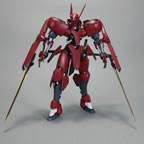 |
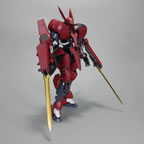 |
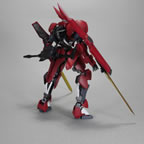 |
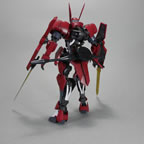 |
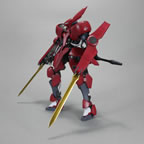 |
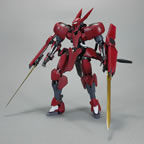 |
 |
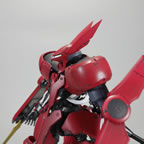 |
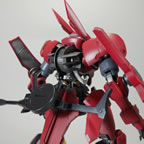 |
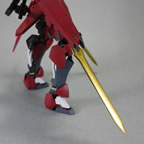 |
 |
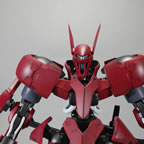 |
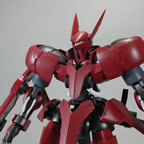 |
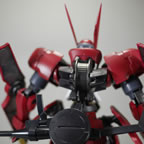 |
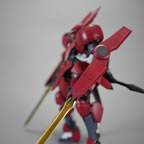 |
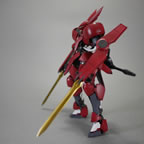 |





































